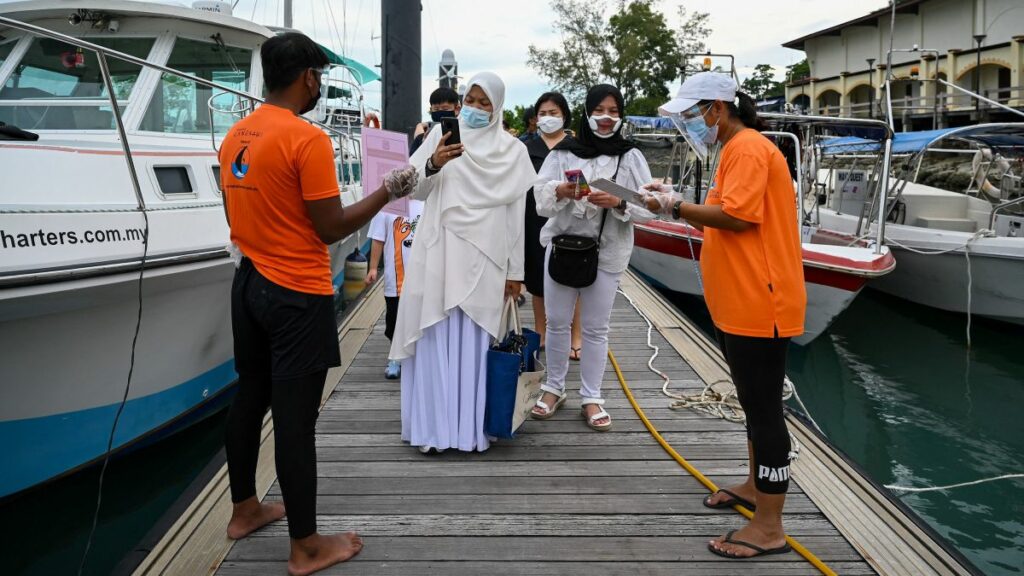Malaysia, Thailand and Vietnam are leaving their zero-Covid policies behind, but they aren’t ready to open up, experts warn

Covid-19 swept across the region this summer, fueled by the highly infectious Delta variant, with cases climbing steeply in July and peaking in most countries by August.Now, governments including Indonesia, Thailand and Vietnam are looking to revive their economies — particularly the vital tourism industry — by reopening borders and public spaces. But experts worry that low vaccination rates in much of the region, and the widespread use of lower-efficacy vaccines including China’s Sinovac, could lead to a catastrophe.Yanzhong Huang, senior fellow for global health at the US-based Council on Foreign Relations think tank, said if vaccination rates aren’t high enough with high-efficacy vaccines before restrictions are lifted, health care systems in Southeast Asia could quickly become overwhelmed.”You’re going to see this spike of severe cases then it’s going to overwhelm the ICU … beds, ventilators, there’s going to be a shortage capacity challenge,” he said.
]]]]>]]>
But for much of the public and many leaders across the region, there seem to be few other options. Vaccines are in short supply, and for many Southeast Asian countries, mass vaccination is unlikely to be achieved in the coming months. All the while, as people lose work opportunities and are confined to their homes, families are going hungry.Jean Garito, a diving school operator in Thailand’s Phuket island, said small- and medium-sized businesses are desperate for borders to reopen. He wasn’t sure how much longer the country’s tourism sector could survive, he added.”If governments are not able to really compensate businesses for their loss in the short and long term, then yes — if they don’t fully reopen, we are all doomed,” Garito said.End of ‘zero Covid’From June through August, many Southeast Asian countries introduced strict restrictions in an attempt to control the Covid wave.Malaysia and Indonesia imposed lockdowns nationwide, while Thailand and Vietnam put in place lockdowns in high-risk regions. Under these restrictions, millions of people were told to stay at home whenever possible and prohibited from domestic travel; schools closed, public transportation was suspended, and gatherings were banned.Since then, daily new cases have dropped across the region, though they still remain high. According to data from Johns Hopkins University (JHU), the Philippines is reporting nearly 20,000 cases a day, with Thailand, Vietnam and Malaysia all recording about 15,000 cases every 24 hours. Indonesia’s infection rates have declined the most — it’s now reporting a few thousand cases a day.The peak has just barely passed, and vaccination rates are dismally low in some places — but already, some governments are beginning to reopen.]]]]>]]>
Covid-19 reported cases and deaths
Vietnam plans to reopen the resort island of Phu Quoc to foreign tourists starting next month,As the pandemic drags on, with communities lifting and reimposing lockdown every few months as families go hungry, people are also experiencing pandemic fatigue. Economic strain aside, governments also face building public pressure to reopen.It’s the “major dilemma” facing scientists, policymakers and world leaders in Asia, Rimal added. “We know vaccines are a major answer, (but) we don’t have access to the vaccine, while we see people suffering and facing job loss.”That’s why humanitarian organizations like the Red Cross are calling on global leaders to provide more vaccine doses to low-income and hard-hit countries in South and Southeast Asia, he said. But in the meantime, if countries are set on reopening anyway, there’s only one thing they can do: strengthen all other aspects of their pandemic response such as public health measures, testing and contact tracing.”Unless we do this, we will definitely see a surge in cases in the days or weeks to come,” he said.Vaccine bluesThere is another major consideration that could make the region’s transition to living with Covid more difficult: the types of vaccines on offer.Many countries in Southeast Asia have heavily relied on Chinese-made vaccines, which generally have a lower efficacy than those made by Western companies.According to Duke University, Thailand has bought more than 40 million doses of the Sinovac drug, while the Philippines and Malaysia have around 20 million each. Cambodia has bought another 16 million.Meanwhile Indonesia has bought 15 million doses of the Sinopharm vaccine, while Malaysia has got another 5 million.While experts generally agree that having access to any vaccine is better than none, the Chinese-made drugs have a lower level of efficacy than Western alternatives such as Pfizer’s or Moderna’s vaccines.]]]]>]]>
Brazilian trials have shown that Sinovac has about a Other countries have begun to move away from using the Sinovac vaccine among concerns over its effectiveness. In July, Malaysia said it would stop using the Chinese-made shots once its current supply of 12 million doses ran out.Thailand said in the same month it would revaccinate its health workers with the Pfizer drug once doses arrived, despite already fully vaccinating them with Sinovac.”I think if they manage to use the highly effective vaccines as booster shots and let a significant percentage of the population be vaccinated, then certainly it’s going to make reopening more justifiable,” said Huang.But for that shift to happen, the global demand on supply needs to ease, or wealthy nations with enough doses need to step in and help — which isn’t happening quickly enough.”It’s very important that the high-income countries share doses of the vaccine as soon as possible to South Asian and Southeast Asian countries so we can come out of the pandemic and go forward with normal life,” said Rimal. “This is one of the most fundamental answers we have.”For Garito, the diving school owner in Thailand, reopening cannot come soon enough. “We all have children and ourselves to feed,” he said.



